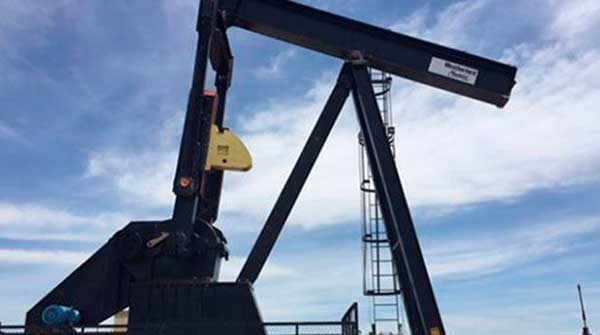The Canadian oil and natural gas industry can maximize shareholder value by applying these strategic moves
 The 2024 outlook for the Canadian oil and natural gas industry is excellent. What can oil and natural gas producers do to maximize the value of multiple bullish observations for shareholders and stakeholders?
The 2024 outlook for the Canadian oil and natural gas industry is excellent. What can oil and natural gas producers do to maximize the value of multiple bullish observations for shareholders and stakeholders?
Consider these observations:
- Global crude oil demand is increasing, and OPEC+ production discipline is surprising. Therefore, Canadian revenue forecasts look excellent. That’s why capital spending plans are up.
- The Trudeau government’s determination to strangle the oil and natural gas industry will be tempered by determined provincial opposition, court challenges, the reality of increasing demand, and a slow energy transition.
- After years of controversy and dithering, Canadian LNG export terminal approvals are emerging. The forecast for global LNG demand and Canadian exports looks promising. Despite claims to the contrary, LNG is a helpful step along the energy transition path.
- The TMX pipeline is inching toward completion, creating a way for Canada to increase crude oil exports to an eager Asian market and reduce reliance on expensive rail exports.
- Investments in Alberta’s petrochemical capacity are increasing local demand for feedstock.
- ESG performance by Canadian producers is superior and continuing to improve. Those facts appeal to some consumers.
- Pro-business parties govern Alberta and Saskatchewan. That encourages investment and increases jobs while reducing risk.
- Even the propane export forecast is bullish.
 |
| More from Yogi Schulz |
| Does your project sponsor need help?
|
| How Canada can easily contribute to Europe’s energy security
|
| Lessons from the Phoenix HR/payroll system fiasco
|
Here are some operational ideas you can implement to maximize the value of these observations for your shareholders and stakeholders. Most are not new. However, most producers can do more to benefit fully from these ideas.
Horizontal wells
There continues to be a surprisingly wide difference in initial production and long-term decline rates between the best horizontal wells and the worst ones in most producing basins in Alberta. It’s unreasonable to claim this difference is due almost entirely to local geological differences.
Instead, there continue to be opportunities for your engineers to adopt best practices in drilling design and operations, as well as completion design and operations.
The geoLOGIC Well Completions and Frac Database can help engineers identify and implement best practices relevant to their planned directional wells.
Water management
Several water-related trends are increasing the attention producers are paying to improve water management. These trends include increasing:
- Trucking costs for produced water and fresh water.
- Fresh water volumes are being consumed for hydraulic fracturing.
- Droughts are reducing available fresh water.
- Competition from municipalities and agriculture is looming for fresh water.
- Provincial government focus on water conservation.
Producers can reduce their water costs by:
- Building a more comprehensive view of fresh water sources and produced water disposal facilities to reduce trucking costs.
- Sharing water management facilities with neighbouring producers.
- Collaborating on research to reduce the cost of cleaning produced water sufficiently to use it effectively for hydraulic fracturing.
Water source and disposal facilities can help by standardizing procedures to simplify training and certification of drivers.
Reviewing water trucking invoices will likely lead you to ideas for reducing those costs.
Fuel, flare and venting
The Canadian oil and gas industry can be proud of its environmental record in reducing fuel, flare and venting volumes. Between 2010 and 2021, the CO2 emissions intensity of Canadian natural gas production fell from 63.5 kilograms of CO2e per barrel of oil equivalent to 44.5 kilograms of CO2e per barrel of oil equivalent, a decline of nearly 30 percent, according to Rystad Energy.
Notwithstanding this record, there remain many individually modest opportunities to reduce GHG emissions further, as follows:
- Replace venting with flaring – Whenever a flared volume replaces a methane venting volume, the associated greenhouse gas reduction is 95 percent.
- Replace venting and flaring with consumption – Whenever a vented or a flared methane volume is consumed instead, the associated greenhouse gas reduction is 100 percent.
- Reduce fugitive emissions – Whenever production equipment is upgraded, a fugitive methane volume is avoided.
This list should trigger a thought about some GHG emission reduction projects you could undertake at your company to improve environmental performance at a modest cost. The fuel, flare and venting volumes by facility on Petrinex will point you in the right direction.
Carbon tax
Some producers are not participating in Alberta’s Technology Innovation and Emissions Reduction (TIER) Regulation and Saskatchewan’s Management and Reduction of Greenhouse Gases (MRGHG) Regulation. Producers can significantly reduce their carbon tax payable by participating.
The monthly flaring and venting volume threshold above which participation saves money is surprisingly low. Proactively reducing flaring and venting volumes by 10 percent annually can keep carbon taxes payable low.
Participating in these carbon tax reduction programs is worthwhile unless your production volumes are tiny.
Abandonment
Keeping the cost of well and facility abandonment low is everyone’s goal. Collaboration with neighbouring licensees will help you keep costs low.
The ARO Manager software package from XI Technologies will help you prioritize wells for abandonment. AccuMap and geoSCOUT can identify neighbouring wells and licensees with which to collaborate.
Seismic data
In recent years, only 40 to 50 percent of wells drilled in the Western Canada Sedimentary Basin benefitted from seismic data. Too many companies believe that the cost of seismic data interpretation is avoidable because:
- The risk of a dry hole is low for development wells. That’s 99 percent of the wells drilled.
- They are creating their own local geology with hydraulic fracturing.
Geophysicists and others point out that skipping seismic data acquisition and interpretation is shortsighted because it:
- Reduces risks even for development wells.
- Optimizes the surface well location.
- Identifies geohazards, such as faults and washout zones.
- Provides an initial roadmap for geosteering wells.
- Contributes to improved well production performance.
Using more seismic data is worth another look because the value of risk reduction and production increase exceeds the cost.
Click here to review digital technology ideas you can implement to maximize shareholder value for your oil and natural gas shareholders and stakeholders.
Yogi Schulz has over 40 years of information technology experience in various industries. Yogi works extensively in the petroleum industry. He manages projects that arise from changes in business requirements, the need to leverage technology opportunities, and mergers. His specialties include IT strategy, web strategy and project management.
For interview requests, click here.
The opinions expressed by our columnists and contributors are theirs alone and do not inherently or expressly reflect the views of our publication.
© Troy Media
Troy Media is an editorial content provider to media outlets and its own hosted community news outlets across Canada.


